Published Alex Hodgson on January 30, 2019
Part 2 – And You Thought You Knew All ASTM D8071 Had to Offer for Gasoline-Range Sample Analysis…
I ended Part 1 of Keep Your Fuel Streams from “Diene” with VUV by asking a couple of rather self-serving questions: how well can GC-VUV measure conjugated diolefins (CDOs), and is it possible to speciate them as part of the normal D8071 analysis? I hope you’ve caught on by now that when I ask, “Can GC-VUV do X?”, the answer is always, “Of course it can!” That’s no coincidence; GC-VUV has repeatedly proven its power across multiple applications, and we’re finding more uses every day! But I digress.
Before we go diving into a fuel sample blindly looking for CDOs, we first need to know a bit about them from a VUV spectral perspective. What’s going to allow us to differentiate these analytes from everything else? Thankfully that’s an easy answer: all we need to do is look at their absorbance spectra to see distinct spectral features above 200 nm, which means they’re going to stand out from saturates, olefins, and mono-aromatics (Figure 1). From here it’s a matter of spiking a few CDOs into a gasoline matrix and running it in duplicate under D8071 conditions to see that this theory holds up (Figure 2a). Zooming in on two of the more baseline-separated CDOs (Figure 2b), they give a nice linear response (r2 > 0.99) from 1% down to 0.05% for C7+ and 0.02% for C6.
As for our lightest conjugated diolefin, 2-methyl-1,3-butadiene (aka isoprene), it was actually detectable down to 0.01% despite co-eluting with several major analytes. Here we yet again rely on the power of spectral deconvolution, specifically time interval deconvolution (TID) via VUV Analyze. Isoprene co-elutes with a paraffin (pentane), which absorbs out until about 160 nm, and an olefin (trans-2-pentene), which has a nice spectral feature around 180 nm but falls off around 210 nm. Thus, we can never confuse the 220 nm spectral feature of isoprene with either of these compounds, allowing for accurate quantitation (Figure 3).
It doesn’t get much simpler than using your D8071 setup to not only get your normal PIONA quantitation with speciation of BTEX, select oxygenates, and di-aromatics, but also to get speciated quantitation of conjugated diolefins. Heck, you can even take your already collected runs, apply an updated library and report method, and get that extra data!
But what if 0.01-0.05% isn’t low enough for you? Well, then you’re in for a little bit more work, but it is certainly possible. We’ll explore a derivatization method that could yield lower limits of detection (but not without its own issues), coming up in Part 3.
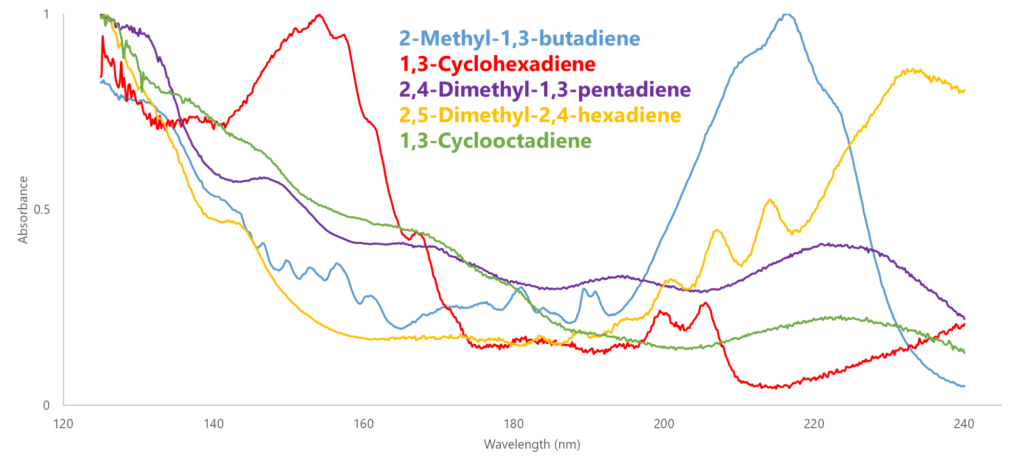
Figure 1. Not only are these 5 conjugated diolefin spectra distinct from one another, they also all have good VUV response at >200 nm, which allows us to easily find them in a complex matrix.
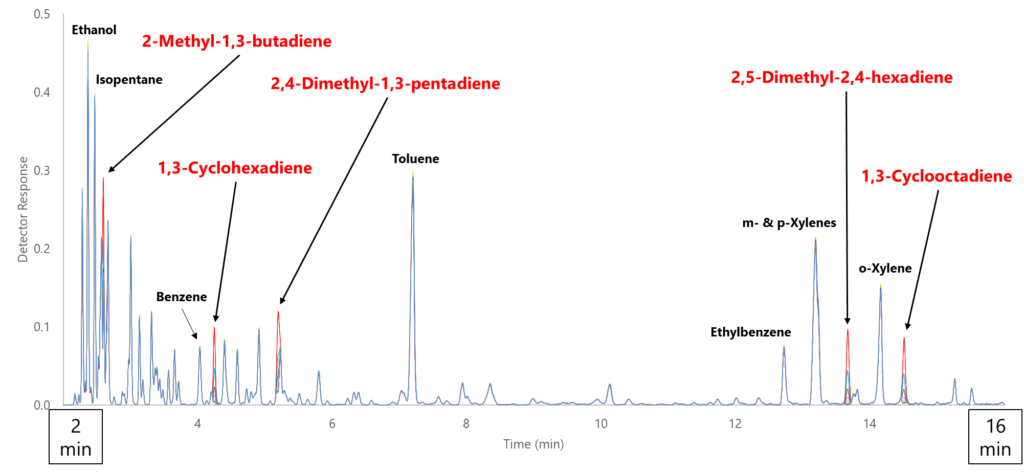
Figure 2a. In less than 15 minutes (i.e. the first half of an ASTM D8071 run), all C5-C8 conjugated diolefins elute, most of them in a relatively clean part of the chromatogram.
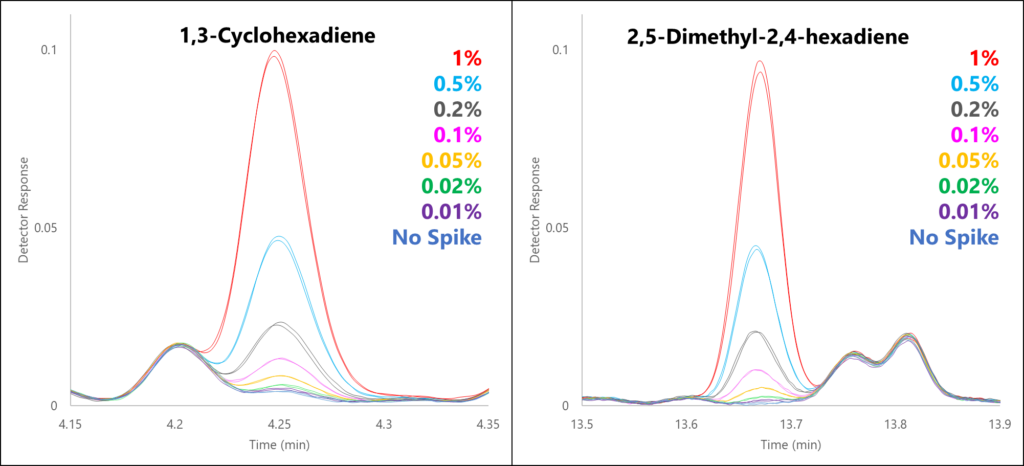
Figure 2b. Taking a closer look at two of the spiked conjugated diolefins, they not only show good repeatability but also track well in detector response down to 0.02-0.05%.
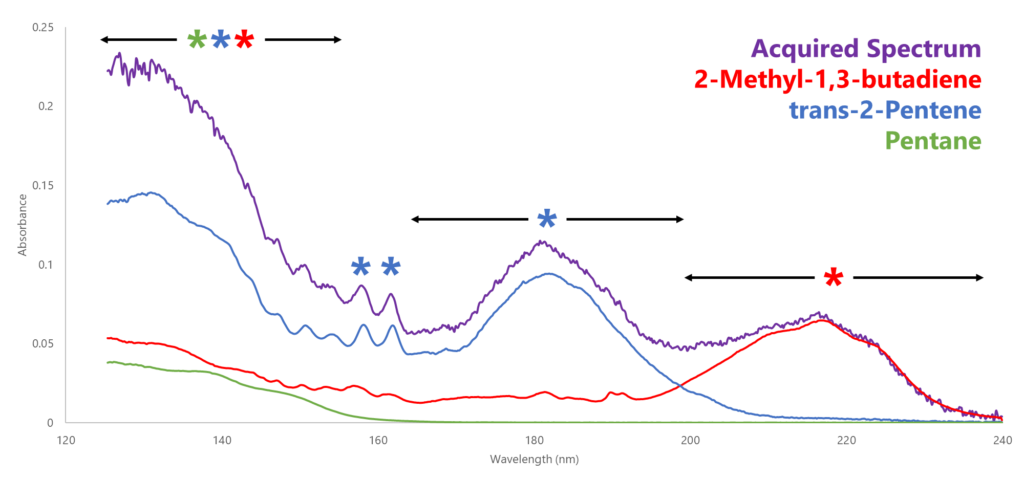
Figure 3. Even when there are several compounds co-eluting with a conjugated diolefin (2-methyl-1,3-butadiene), its spectrum has a unique response in a different wavelength region, making identification straightforward and quantitation accurate.


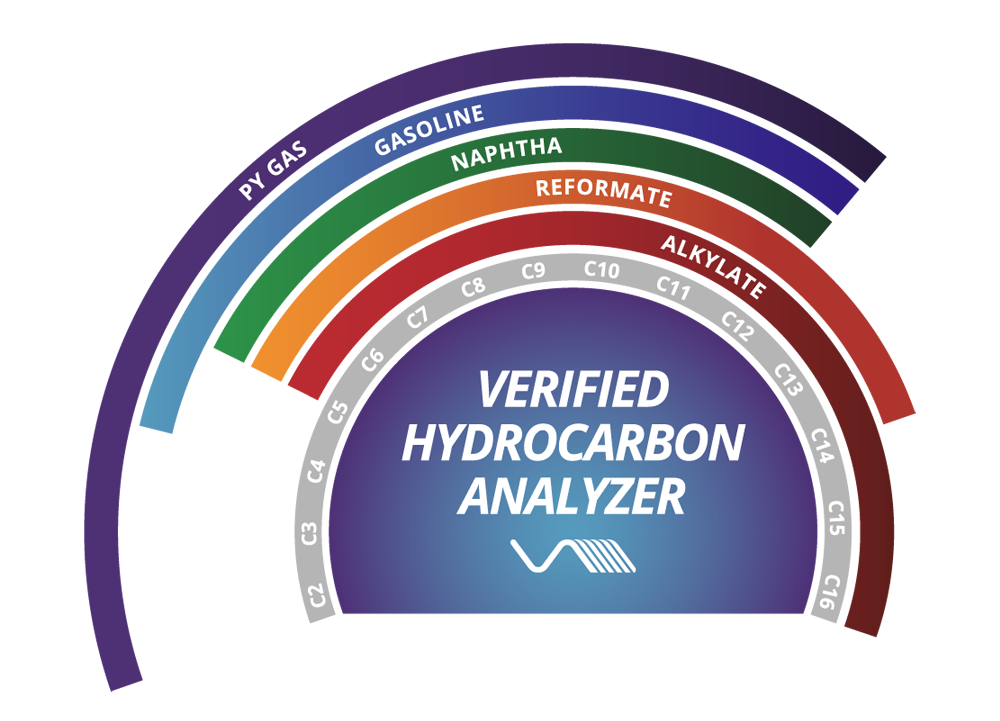

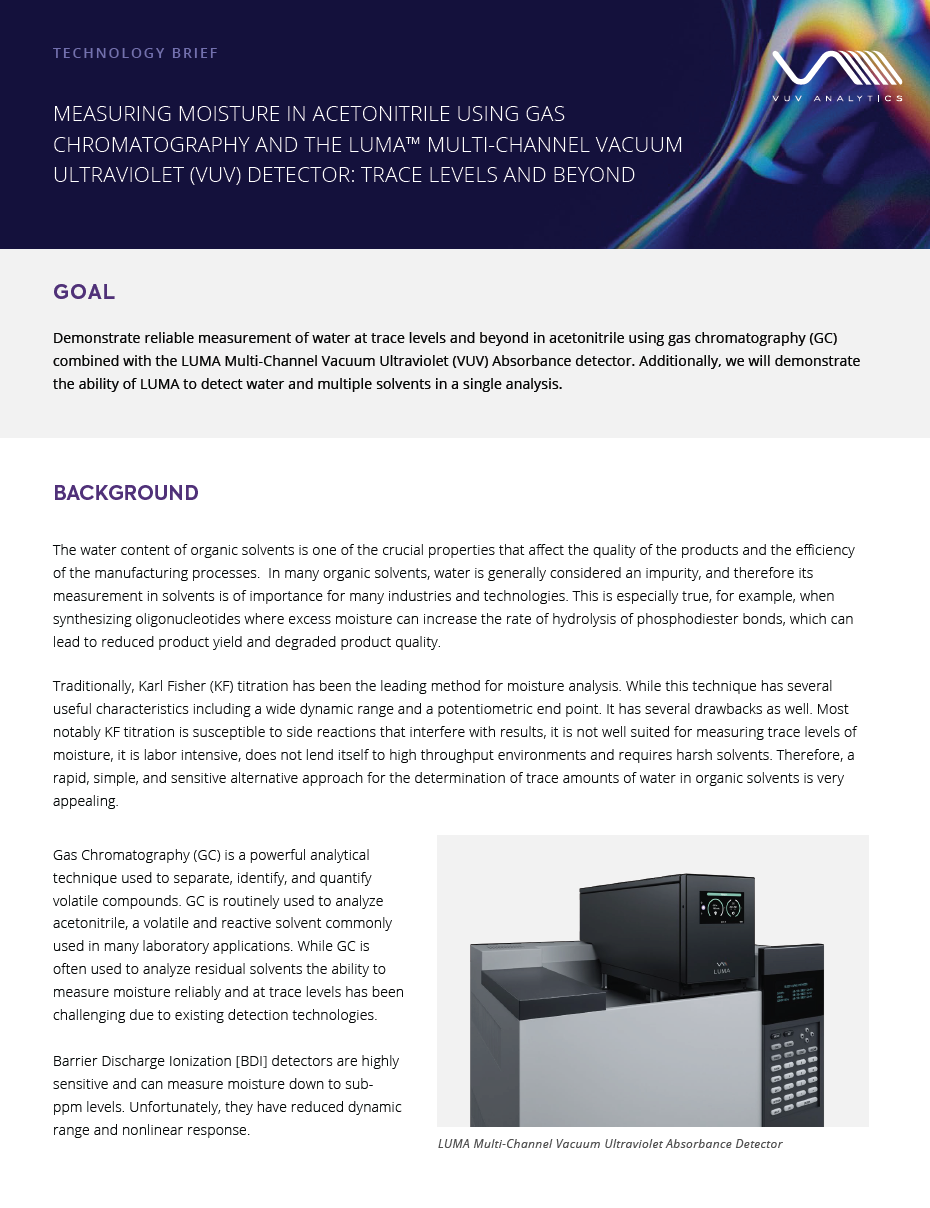





Leave a Reply